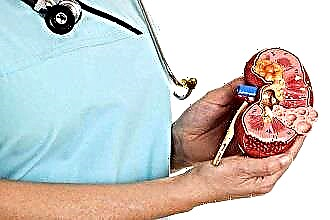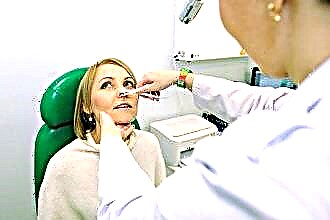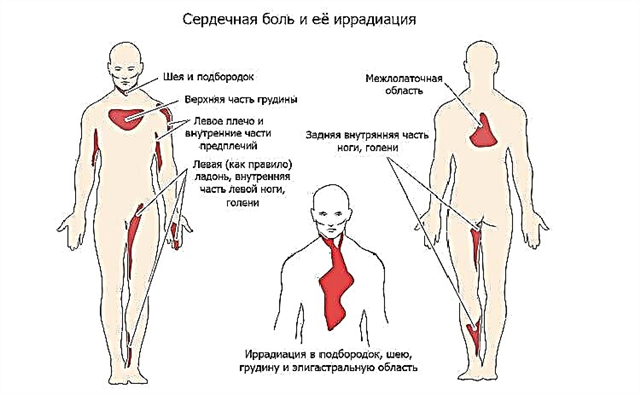Cardiac tamponade is a pathological condition that develops as a result of the accumulation of fluid between two sheets of the pericardium. As a result, the heart cannot fully contract because its chambers are compressed. The disease occurs against the background of both chronic (pericarditis) and acute diseases or injuries. This process can lead to the development of cardiac shock and, accordingly, death, therefore, requires immediate medical attention.
The reasons for the development of the condition
Normally, there is a small amount of fluid between the layers of the pericardium, which acts as a lubricant and a protective barrier. If, due to some pathological process, its volume increases or blood enters the cavity, the pressure rises and the heart chambers are compressed. Blood does not flow to the atria and ventricles, causing the heart to stop.
As already mentioned, pathology can develop chronically and acutely.
In the first case, the fluid gradually fills the pericardial cavity, it stretches and can accommodate a significant volume (more than 1 liter). In this case, chronic heart failure develops.
This option occurs due to exudative pericarditis, the causes of which may be:
- infectious diseases;
- autoimmune pathologies;
- oncological neoplasms;
- endocrinopathy.
If the condition develops rapidly (for example, with hemotamponade due to penetrating injury), the pericardium cannot adapt and a syndrome of acute heart failure occurs.
Clinical manifestations and typical symptoms
Symptoms depend on the pathogenesis of the disease. In the case of chronic inflammation of the pericardium, the clinical picture develops slowly, against the background of the underlying disease. In this case, the following signs are most characteristic:
- discomfort, a feeling of heaviness in the chest;
- dyspnea;
- weakness;
- The heart rate is increasing, but the pulse is weak, barely palpable;
- cyanosis, sweating.
The pronounced clinic of tamponade is manifested by the so-called Beck triad:
- low blood pressure;
- swelling of the veins in the neck;
- muffled tones on auscultation.
With hemopericardium, the clinic develops quickly, the symptoms are pronounced:
- sharp, sharp pain behind the sternum (especially with a ruptured heart muscle);
- Beck's triad;
- the disappearance of the pulse when inhaling;
- impaired consciousness (up to fainting)
- pallor of the skin and cyanosis of the face.
Diagnostics
On physical examination, the following symptoms are observed:
- Beck's triad;
- expansion of the boundaries of the heart (percussion);
- weakening or complete disappearance of the heart impulse.
The ECG shows a rather nonspecific picture - a decrease in voltage, arrhythmias, tachycardia, electrical alternation.
Chest x-ray - enlarged borders of the heart.
The main method for diagnosing this condition is echocardiography. This method allows you to:
- detect fluid in the pericardial cavities and determine its amount;
- measure cardiac output, which makes it possible to judge the severity;
- examine the myocardium and large vessels for traumatic injuries;
- to reveal diastolic collapse of the right ventricle.
In some cases, transesophageal echocardiography is performed.
Emergency care and treatment algorithm
Cardiac tamponade is a life-threatening condition that requires immediate intensive care and surgery.
To maintain hemodynamics and water-electrolyte balance, the patient is given an infusion of crystalloids, albumin or plasma. With significant respiratory failure, artificial ventilation is indicated.
The main method of treatment is pericardiocentesis - puncture (puncture) of the heart bag and removal of accumulated fluid. This relieves the stress on the heart and restores normal blood circulation. The selected content is sent for pathological examination. The procedure is usually carried out under the supervision of ECHO-KG.
After stabilization of the state, drainage is introduced into the pericardial cavity in order to drain exudate and prevent relapses, while continuing infusion therapy.
Further treatment is carried out depending on the cause. For inflammatory and infectious processes, the following drugs are shown:
- antibiotics;
- glucocorticosteroids;
- non-steroidal anti-inflammatory drugs.
In more difficult cases, open surgery is performed - pericardiotomy. In this case, holes are made in the wall for inspection of the cavity and drainage.
With hemotamponade, a prerequisite is the elimination of the source of bleeding in the pericardium. The operation consists in suturing myocardial wounds or large vessels.
Possible complications
This critical condition, if incorrect or delayed treatment, can lead to serious complications.
In the acute period, there are:
- cardiac shock;
- sudden death;
- myocardial infarction;
- arrhythmias.
In a later stage, the following develop:
- fibrinous pericarditis;
- myocardiosclerosis;
- arrhythmias.
Conclusions
Cardiac tamponade, regardless of its cause, is a life-threatening condition that requires immediate hospitalization and intensive treatment. Compression of the accumulated fluid of the atria and ventricles leads to a significant decrease in the ejection fraction and, as a result, to circulatory disorders and cardiac arrest.
If you find any signs of acute heart failure, such as shortness of breath, chest pain and cyanosis, you should immediately call an ambulance. With timely treatment, the prognosis for life is favorable.



